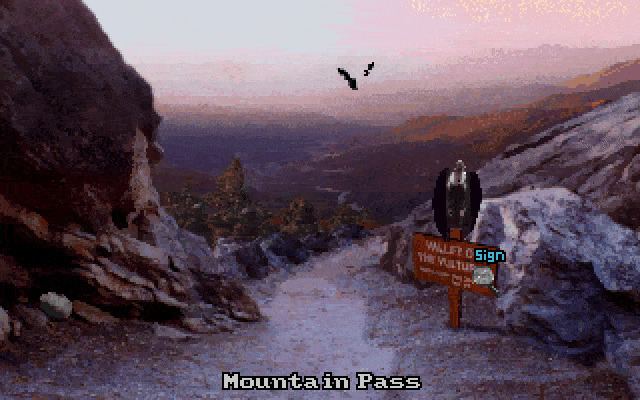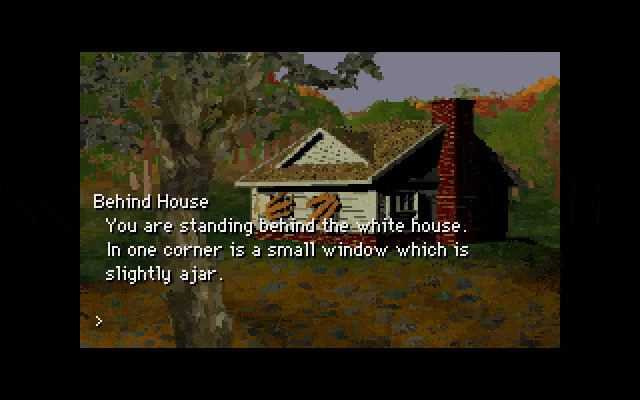8.2 /10 1 Votes8.2
4.2/5 My Abandonware Mode(s) Single player Genre Adventure game | 4/5 GOG Designer(s) Doug Barnett Initial release date 1993 | |||||||||||||||||||||||||||||||||
 | ||||||||||||||||||||||||||||||||||
Engine Multimedia Applications Development Environment Platforms Microsoft Windows, DOS, Macintosh operating systems, PlayStation, Sega Saturn, PC-FX, FM Towns, PC-9800 series Similar Infocom games, Adventure games | ||||||||||||||||||||||||||||||||||
Mostly walking return to zork p1
Return to Zork is a 1993 graphic adventure game in the Zork series. It was developed by Activision and was the final Zork game to be published under the Infocom label.
Contents
- Mostly walking return to zork p1
- Mostly walking return to zork p3
- Gameplay
- Feelies
- Plot
- Soundtrack
- Reception
- References

Mostly walking return to zork p3
Gameplay

Unlike the previous games in the Zork franchise, which were text adventures, Return to Zork takes place from a first-person perspective and makes use of video-captured actors as well as detailed graphics; a point-and-click interface replaced the text parser for the first time in a Zork game. The overall gameplay style was somewhat similar to Myst, although Return to Zork predated Myst by a few months. Unlike Myst, which had no extraspatial dimensions of functionality, Return to Zork features multiple ways of interacting with each object in the game world, as well as with several non-player characters also present in the world via a menu which appears on the left side of the screen. It also offers multiple ways to "complete" the game, encouraging replay.

Among the actors who appear in the game were a number of recognizable character actors as well as a number of well-known younger actors: Robyn Lively of Twin Peaks as "The Fairy", Jason Hervey of The Wonder Years as "The Troll King", and Sam J. Jones from the 1980 film Flash Gordon as "The Blind Bowman" and A.J. Langer of My So-Called Life as fellow Zork explorer Rebecca Snoot whom the player encounters on several occasions.

Game designer, Doug Barnett, worked independently with Activision and wrote several "choose your own adventure" style books. Art designer Mark Long (co-founder/owner of Zombie Studios) had several goals in mind to "make the game realistic" and "avoid things like mazes in text adventure games," and "multiple ways to solve puzzles, and to finish the game." In an interview in 1999, he stated these concepts:

- All of the puzzles in the game reference real, albeit esoteric, references to various cultures and archeological history and studies. A common example would be the exploration of the pyramids in Egypt along with the mythology that surrounds them, but uncommonly known examples were chosen over better-known ones. Mark's overseas duties in the U.S. Army (retired Major) combined with a year of historical research enhanced the puzzles that must be solved to finish the game.
- Navigation is "always correct; if you move north then south, you are always in the same place. Solving mazes was overdone, dull, and annoying."
- There are multiple ("at least three") ways to solve puzzles, as well "as a half-dozen ways to complete the game." His reasoning: "I didn't like games that you had to follow a single, specific, obfuscated path for each puzzle, and just one way the game could be finished." This was contrary to text-based adventure games and the widely popular Myst series. It also "gave the player a reason to play the game more than once, trying to discover new ways to solve puzzles and to finish the game. Serious gamers said they had worked out dozens of combinations to complete the game."
Feelies
As a tribute to the original Infocom, Return to Zork included feelies. The feelies include:
Plot
The player's character is a sweepstakes winner who wins an all expenses paid holiday to the Valley of the Sparrows, in Zork. Upon arrival, however, the player quickly learns that the entire area has fallen under some dark and sinister influence, becoming decayed and dysfunctional. Whole buildings have mysteriously vanished, murderous vultures infest the land, people have frequent and disturbing nightmares featuring some dark being which refers to itself as Morphius, and many of those who have survived have become reclusive and paranoid. The player must survive countless perils whilst exploring the valley, investigating the causes of the powers that have gripped the land and ultimately putting a stop to them.
Soundtrack
The game disc is also a 26-track audio disc. Each track on the disc plays in a specific location in the game. Some tracks are used in more than one location. In a few cases, a MIDI version of the music is used in the game instead of the CD recording. The tracks are as follows:
- (Game data; not a music track - a conventional CD player will play this as a blank track)
- Prologue (unused)
- Opening of the Mailbox
- White House AND Vulture Pits
- Opening Credits (Journey to the Valley)
- West Shanbar AND Front of Lighthouse AND Road to the South
- Bel Naire Temple
- Entering the Great Underground Empire AND Closing Sequence at End of Game
- Files in Mayor's Office AND Notebook AND Sliding Tiles Puzzle
- Guardian of Zork
- Dreaming of Morpheus AND Inside the Vulture Pits
- Fool's Memorial
- Hero's Memorial AND Boar's Memorial
- Hardware Store AND Ferryman's Dock AND Troll Defeat
- Troll Fight
- Gift Shop
- Boos Miller (unused - MIDI version used in game)
- Dwarven Mines
- Whispering Woods
- Entering the Citadel of Zork (unused - MIDI version used in game)
- Endgame of Survivor (unused - MIDI version used in game)
- Moodock's Armory (MIDI version used in game)
- Forest of the Spirits (this piece is the Pavane by Gabriel Fauré)
- Cliffs of Depression AND Bogs
- Blacksmith AND Incinerator
- Medley (unused - possibly a rejected version of the final credits)
Reception
Charles Ardai of Computer Gaming World wrote in a preview of Return to Zork that modernizing the Zork series was "treading on sacred ground. It's a little bit like daring to remake Casablanca".
